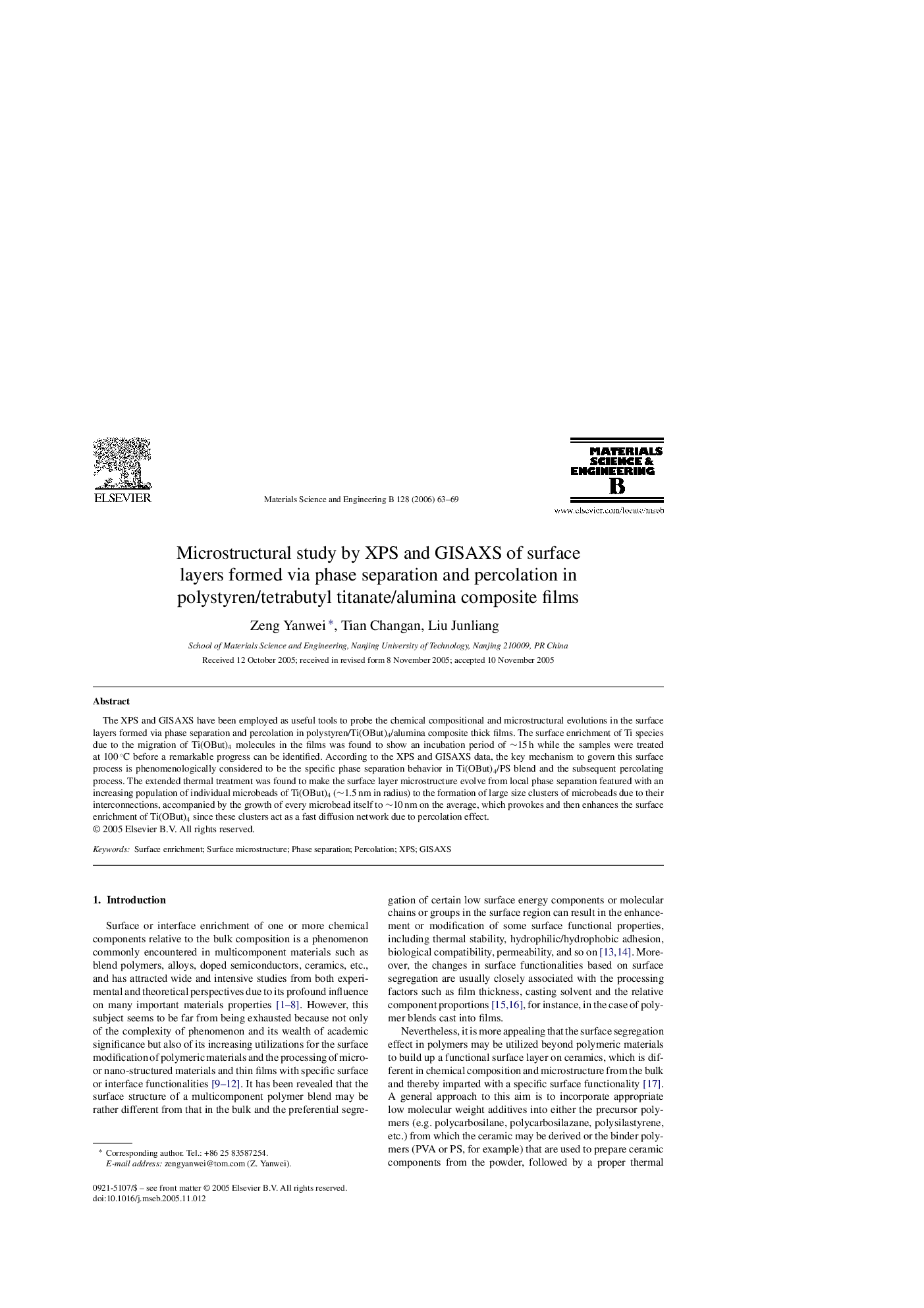| Article ID | Journal | Published Year | Pages | File Type |
|---|---|---|---|---|
| 1532228 | Materials Science and Engineering: B | 2006 | 7 Pages |
The XPS and GISAXS have been employed as useful tools to probe the chemical compositional and microstructural evolutions in the surface layers formed via phase separation and percolation in polystyren/Ti(OBut)4/alumina composite thick films. The surface enrichment of Ti species due to the migration of Ti(OBut)4 molecules in the films was found to show an incubation period of ∼15 h while the samples were treated at 100 °C before a remarkable progress can be identified. According to the XPS and GISAXS data, the key mechanism to govern this surface process is phenomenologically considered to be the specific phase separation behavior in Ti(OBut)4/PS blend and the subsequent percolating process. The extended thermal treatment was found to make the surface layer microstructure evolve from local phase separation featured with an increasing population of individual microbeads of Ti(OBut)4 (∼1.5 nm in radius) to the formation of large size clusters of microbeads due to their interconnections, accompanied by the growth of every microbead itself to ∼10 nm on the average, which provokes and then enhances the surface enrichment of Ti(OBut)4 since these clusters act as a fast diffusion network due to percolation effect.
